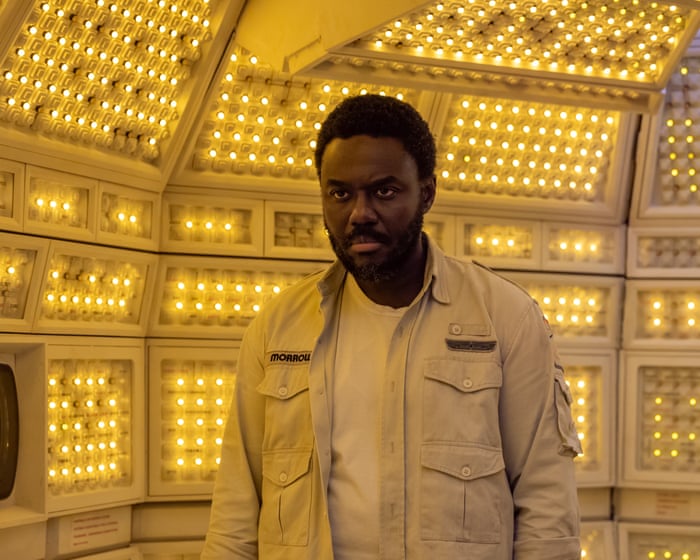It’s usually a bad sign if you’re two episodes into a drama and still have no idea what’s happening—unless you get the sense that while you might be confused, the show itself knows exactly what it’s doing. That’s the bold, disorienting, yet utterly confident vibe of Alien: Earth, a new TV adaptation of cinema’s greatest sci-fi horror franchise, helmed by Fargo creator Noah Hawley.
The year is 2120, a fitting backdrop for a story that taps into our fears of a dystopian future for generations to come. Stark green-on-black text, styled like an ’80s computer readout, sets the scene: corporations now rule the universe, locked in a ruthless “race for immortality” to determine which of three technologies will dominate—cyborgs (enhanced humans), synths (fully artificial beings), or hybrids (synthetic bodies with human consciousness).
The first episode focuses on hybrids, keeping the iconic, flesh-ripping aliens mostly in brief, almost subliminal flash-forwards. In Neverland, the lab of trillion-dollar startup Prodigy, a terminally ill girl lies beside an inert synthetic woman she calls Wendy. After a procedure, her dying mind is transferred into the lifelike artificial body. The newly awakened Wendy (Sydney Chandler) becomes the first hybrid and soon leads a group of childlike robot soldiers, guided by the unsettling Kirsh (Timothy Olyphant), whose bleach-blond hair, eerie whisper, and turtleneck scream something is very wrong here.
Meanwhile, in space, a crew faces a nightmare scenario. Managed by the cold, corporate-aligned cyborg Morrow (Babou Ceesay), they’re transporting captured aliens in flimsy glass containers—which, predictably, shatter. The creatures slaughter everyone except the self-serving Morrow, who barely escapes as the ship crashes into a towering Earth skyscraper.
As Prodigy’s scavenger team—led by the apathetic medic Hermit (Alex Lawther, also Wendy’s long-lost brother)—arrives to pick through the wreckage, the monsters finally break free. Unlike the claustrophobic terror of the Alien films, Earth unfolds in a more open setting, forcing the show to find new ways to instill dread.
The aliens themselves, while not groundbreaking in design, are still terrifying—ranging from scuttling leech-like creatures to a many-legged eyeball monstrosity and a sleeker, more humanoid xenomorph. Their kills leave behind grotesquely artistic carnage, reminiscent of Hannibal’s grisly tableaus.
Alien: Earth doesn’t just rely on jump scares—it builds an atmosphere of unease, where even the human characters feel like something is deeply off. And when the creatures strike, they do so with brutal, nightmarish precision.The casting is excellent, with Lawther delivering the same detached resignation he brought to The End of the Fing World*, while Chandler balances it with a unsettling mix of innocence and hidden strength. Wendy, a clear metaphor for AI’s rise, possesses abilities even her creators don’t fully grasp.
Samuel Blenkin shines as Boy Kavalier, the so-called “genius” CEO of Prodigy and the Neverland project—a well-deserved role after his standout performance as the bitter Prince Charles in Mary & George. Dressed in cozy robes and exuding a youthful, Wonka-like energy, he plays the dangerously influential tech-bro visionary who could bring the world to ruin, seemingly just for fun. One standout detail in Blenkin’s performance is how Boy takes an important video call while lounging on a bed, gripping a tablet between his bare feet.
Alien: Earth’s first two episodes lack a tight, linear plot or clear thematic direction, occasionally leaving viewers as confused as Westworld did. Yet whether it’s a tilted hallway, a stark concrete landscape showered in sparks, an alien creature squirming in the dark, or just the weary look in a character’s eyes, the series always makes us feel like hunted prey. Something terrifying is always looming.
Alien: Earth is now streaming on Disney+.
FAQS
### **Frequently Asked Questions (FAQs) – *Alien: Earth Review – A Show Steeped in Deep-Rooted Terror***
#### **General Questions**
**Q1: What is *Alien: Earth* about?**
A: *Alien: Earth* is a sci-fi horror series that explores deep-rooted terror through an unsettling narrative about extraterrestrial threats, primal fears, and psychological dread.
**Q2: Is *Alien: Earth* connected to the *Alien* movie franchise?**
A: No, it’s a standalone series with its own story, but it shares similar themes of cosmic horror and survival.
**Q3: Where can I watch *Alien: Earth*?**
A: The series is available on [streaming platform, e.g., Hulu, Amazon Prime, etc.]. Check your local listings.
**Q4: How many episodes are in the first season?**
A: The first season has [X] episodes, each building tension and horror progressively.
—
#### **Themes & Atmosphere**
**Q5: Why does *Alien: Earth* feel so terrifying?**
A: It uses slow-burn suspense, psychological horror, and primal fears (like isolation and the unknown) to create lingering dread.
**Q6: Is the show more psychological or gory?**
A: It leans more into psychological terror, but there are intense, visceral moments.
**Q7: Does *Alien: Earth* rely on jump scares?**
A: No, it builds fear through atmosphere, tension, and unsettling imagery rather than cheap jump scares.
—
#### **Characters & Story**
**Q8: Who are the main characters in *Alien: Earth*?**
A: The story follows [brief character descriptions, e.g., a scientist, a survivor, etc.] as they confront an otherworldly threat.
**Q9: Is there a deeper meaning or metaphor in the show?**
A: Yes, it explores themes like human vulnerability, existential dread, and the fear of the unknown.
**Q10: Does the show have a satisfying ending, or is it a cliffhanger?**
A: [No spoilers] The ending is intense and thought-provoking, leaving some questions open for interpretation.
—
#### **View




